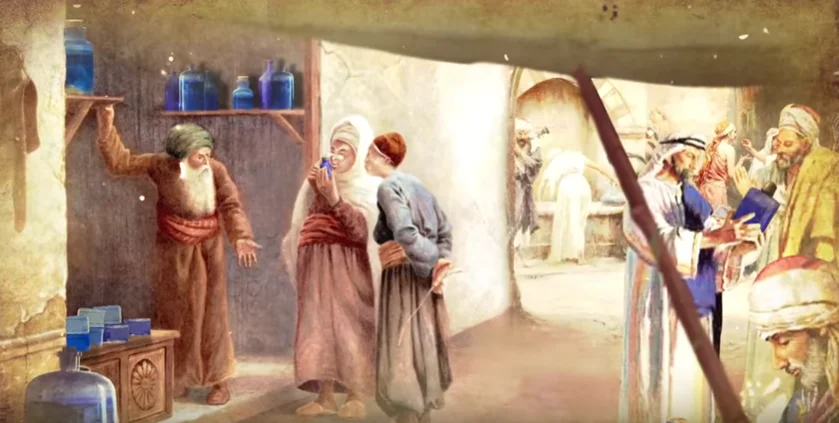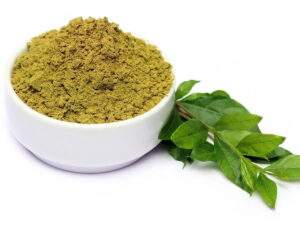Indigo, known as the “true blue” dye, has a long and fascinating history as a natural coloring agent. Derived from the leaves of the indigofera plant, indigo offers a rich and captivating blue hue that has captivated cultures around the world for centuries. In this informative piece, we will embark on a journey into the background and cultural significance of indigo, exploring its origins, extraction methods, and diverse applications. Join us as we dive into the enchanting world of indigo.
Origins and Cultural Significance of Indigo

Ancient Roots: Tracing the History of Indigo
The history of indigo spans across centuries, weaving a colorful tapestry of cultural significance and trade. Indigo, a natural blue dye derived from the plant Indigofera tinctoria, has a rich and intriguing past that can be traced back to ancient civilizations. Its use can be found in various parts of the world, including India, Egypt, China, and Mesopotamia.
One of the earliest records of indigo’s use can be found in ancient Egypt, where fragments of indigo-dyed textiles dating back to around 2400 BCE have been discovered. Indigo was highly valued for its deep, vibrant blue color and was often associated with royalty and status. In India, indigo cultivation and dyeing techniques have been practiced for thousands of years. It became a major industry during the Indus Valley Civilization, with indigo dye being exported to different parts of the world. The indigo trade also flourished along the Silk Road, connecting Asia with Europe, making indigo a valuable commodity in international commerce.
Throughout history, indigo has been intertwined with cultural traditions and symbolism. In many cultures, indigo dyeing techniques were closely guarded secrets, passed down through generations. The rich blue color of indigo has been associated with spirituality, wisdom, and protection against evil spirits. It has been used in religious ceremonies, traditional clothing, and artistic expressions, showcasing its significance as more than just a dye. The ancient roots of indigo reveal a fascinating journey of trade, craftsmanship, and cultural significance, making it a truly timeless and revered natural dye.
Indigo as a Symbol of Status and Tradition
Indigo, with its deep and captivating blue hue, has held a significant place as a symbol of status and tradition throughout history. Across various cultures and civilizations, indigo has been associated with prestige and wealth, representing a mark of social standing. In ancient Egypt, indigo-dyed textiles were reserved for the privileged few, including pharaohs and the elite, signifying their elevated status and authority. Similarly, in India, indigo-dyed fabrics were highly sought after by the nobility, showcasing their affluence and refined taste. The rich blue color of indigo garments became a visual representation of power, luxury, and exclusivity.
Beyond its status as a symbol of wealth, indigo has become deeply ingrained in cultural traditions, serving as a reminder of ancestral heritage. In many societies, indigo dyeing techniques have been passed down through generations, preserving cultural practices and craftsmanship. Indigo-dyed textiles are often woven into traditional garments, such as saris in India or robes in West Africa, symbolizing a connection to cultural customs and ancestral roots. Wearing indigo-dyed clothing not only honors tradition but also reinforces a sense of identity, community, and belonging. Indigo’s enduring significance as a symbol of status and tradition underscores its timeless appeal and the profound influence it has had on various cultures throughout the ages.
The Science Behind Indigo

Indigofera: The Source of True Blue
Indigofera, commonly known as true indigo, is a fascinating plant species that serves as the primary source of indigo dye. Belonging to the Fabaceae family, Indigofera encompasses a diverse group of flowering plants with approximately 750 different species. These plants exhibit varying growth habits, with some being shrubs, small trees, or herbaceous perennials.
Cultivation techniques for Indigofera vary depending on the species and regional conditions. Generally, these plants prefer warm climates and well-drained soil. They thrive in tropical and subtropical regions, such as India, Southeast Asia, Africa, and Central and South America. Indigofera plants are often cultivated through seeds or vegetative propagation methods like cuttings or layering.
The key chemical component responsible for the iconic blue color of indigo is indican, which is found in the leaves of Indigofera plants. Indican is a water-soluble compound that undergoes a chemical transformation to release indigo dye. To extract the indigo pigment, the leaves are harvested and subjected to a fermentation process. During fermentation, enzymatic reactions break down the indican into glucose and indoxyl. The indoxyl then oxidizes in the presence of air, forming insoluble indigo particles. These particles are collected, dried, and further processed to create a usable indigo dye.
Understanding the botanical characteristics of Indigofera, along with its preferred growing conditions and the chemical processes involved in indigo extraction, provides a solid foundation for appreciating the natural source of true blue dye. This knowledge enables a deeper understanding of the cultural and historical significance of indigo and its role as a cherished natural pigment.
The process of extracting indigo dye from the indigofera plant involves a series of intricate steps. Traditionally, the leaves of the plant are harvested and soaked in water, initiating a fermentation process. During fermentation, enzymes present in the leaves convert a water-soluble compound called indican into a precursor called indoxyl. This precursor is responsible for the blue color of indigo.
After fermentation, the leaf material is removed, and the liquid is exposed to air. The indoxyl molecules undergo oxidation, transforming into insoluble indigo particles. These particles settle at the bottom of the container and are collected. The collected indigo is then dried and processed into a fine powder or solid form suitable for dyeing.
Modern extraction methods have also been developed to enhance efficiency. These methods often involve the isolation and purification of indigo precursors through chemical extraction or enzymatic processes. The extracted precursors are then oxidized and converted into indigo dye using various chemical or enzymatic catalysts.
The extraction process is a delicate balance of chemical reactions, requiring precise control of fermentation, oxidation, and reduction conditions. The result is the creation of the iconic deep blue pigment known as indigo. This exquisite dye has been used for centuries, captivating cultures with its vibrant color and playing a significant role in art, textiles, and cultural traditions worldwide.
The Versatility of Indigo
Indigo in Textiles: A Timeless Tradition
Indigo dye has left an indelible mark on the textile industry, becoming a timeless tradition that has spanned centuries. Its rich history and enduring popularity have made it a beloved choice for coloring fabrics, from the iconic blue denim to traditional garments around the world.
One of the most well-known applications of indigo dye is in denim production. The deep blue shade achieved through indigo dyeing has become synonymous with denim jeans, creating a lasting fashion trend that transcends time and culture. The process of indigo dyeing for denim involves the immersion of fabric into a vat containing indigo dye, where the dye penetrates the fibers and creates a unique depth of color. This method of dyeing, known as vat dyeing, allows for the creation of various shades of blue, from light to dark, giving denim its characteristic appeal.
Beyond denim, indigo dye has been used in diverse textile traditions across different cultures. Indigo resist dyeing techniques, such as tie-dye, shibori, and batik, have been practiced for centuries. These techniques involve creating patterns by selectively blocking or resisting the dye, resulting in intricate and beautiful designs. From the indigo-dyed fabrics of West Africa to the indigo-dyed saris of India, the artistry of indigo dyeing has become a cultural heritage, with each pattern and design reflecting the traditions and aesthetics of its respective region.
The allure of indigo lies not only in its mesmerizing blue color but also in the craftsmanship and artistry associated with its application. Whether in the form of denim or traditional textiles, indigo dyeing represents a timeless tradition that continues to captivate and inspire. Its deep-rooted history, versatile dyeing techniques, and unique designs have solidified indigo’s position as an enduring symbol of beauty and tradition in the textile world.
Indigo as a Natural Hair Dye
Indigo, typically renowned for its use as a fabric dye, also holds great potential as a natural hair dye. When applied to hair, indigo can create stunning shades of blue-black, providing a unique and eye-catching look. One of the remarkable qualities of indigo is its ability to impart a rich and intense color to hair, especially when used in combination with henna.
The combination of henna and indigo opens up a vast spectrum of hair colors, ranging from deep browns to jet blacks. By first applying henna to the hair, which provides a reddish tone, and following it up with indigo, the resulting color can be customized to individual preferences. This natural hair dye method offers a safer alternative to chemical-based dyes, as it avoids the potential harmful effects of harsh chemicals commonly found in commercial products.
Aside from its color-enhancing properties, indigo can also be beneficial for the hair’s health. It is known for its conditioning and nourishing effects, helping to improve the overall texture and shine of the hair. Indigo can help strengthen the hair strands, reduce breakage, and promote healthy growth. Moreover, as a natural dye, indigo is less likely to cause scalp irritation or allergic reactions, making it a suitable option for individuals with sensitive skin.
Indigo as a natural hair dye provides an exciting avenue for those seeking to embrace vibrant and unconventional hair colors while prioritizing the health and well-being of their hair. With its stunning blue-black hues and nourishing properties, indigo offers a natural and chemical-free solution for transforming hair color and achieving a striking, head-turning look.
Indigo in Traditional Medicine and Wellness
Indigo, renowned for its captivating blue color, possesses therapeutic properties that extend beyond its use as a dye. In traditional medicine systems like Ayurveda and traditional Chinese medicine, indigo has been valued for its medicinal applications. One of its notable qualities is its anti-inflammatory properties, making it useful for alleviating inflammatory conditions in the body.
In Ayurveda, indigo is believed to balance the doshas, particularly Pitta and Kapha. It has been used to treat skin conditions such as eczema, psoriasis, and rashes due to its cooling and soothing effects. Indigo paste or oil derived from the plant is often applied topically to reduce inflammation and promote healing.
Traditional Chinese medicine also recognizes the therapeutic potential of indigo. It is believed to have detoxifying properties and is used to clear heat and toxins from the body. Indigo is often employed in formulas for treating conditions such as fevers, sore throat, and digestive disorders.
Additionally, indigo has been studied for its potential anti-cancer properties. Some research suggests that indigofera plants contain compounds that exhibit anti-tumor effects, although further studies are needed to explore their full potential.
Indigo’s inclusion in traditional medicine systems highlights its diverse healing properties. From its anti-inflammatory effects to its detoxifying and potential anti-cancer properties, indigo offers a holistic approach to promoting well-being and maintaining health. However, it’s important to consult with qualified practitioners and conduct thorough research before incorporating indigo or indigo-based treatments into your wellness routine.
Conclusion:
Indigo, the true blue elixir of nature, carries with it a rich history, cultural significance, and diverse applications. From its ancient origins to its enduring presence in various industries, indigo continues to inspire and captivate. Whether in textiles, hair dyeing, or traditional medicine, indigo remains a symbol of beauty, tradition, and the harmonious relationship between humans and nature. Embark on your own exploration of the true blue essence of indigo and embrace its timeless allure.

